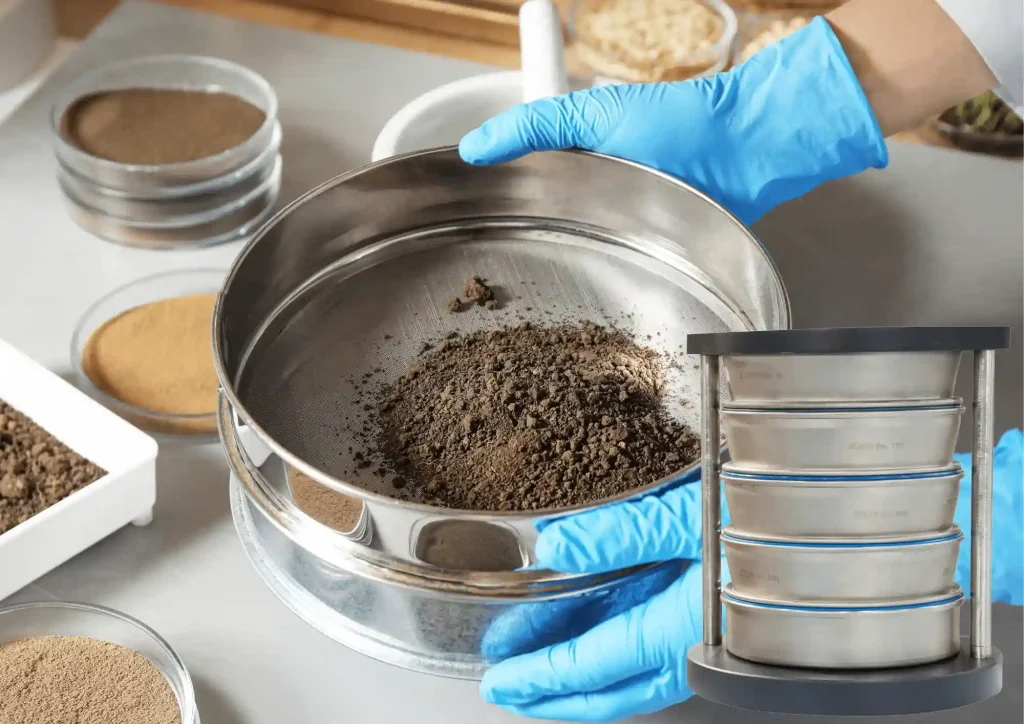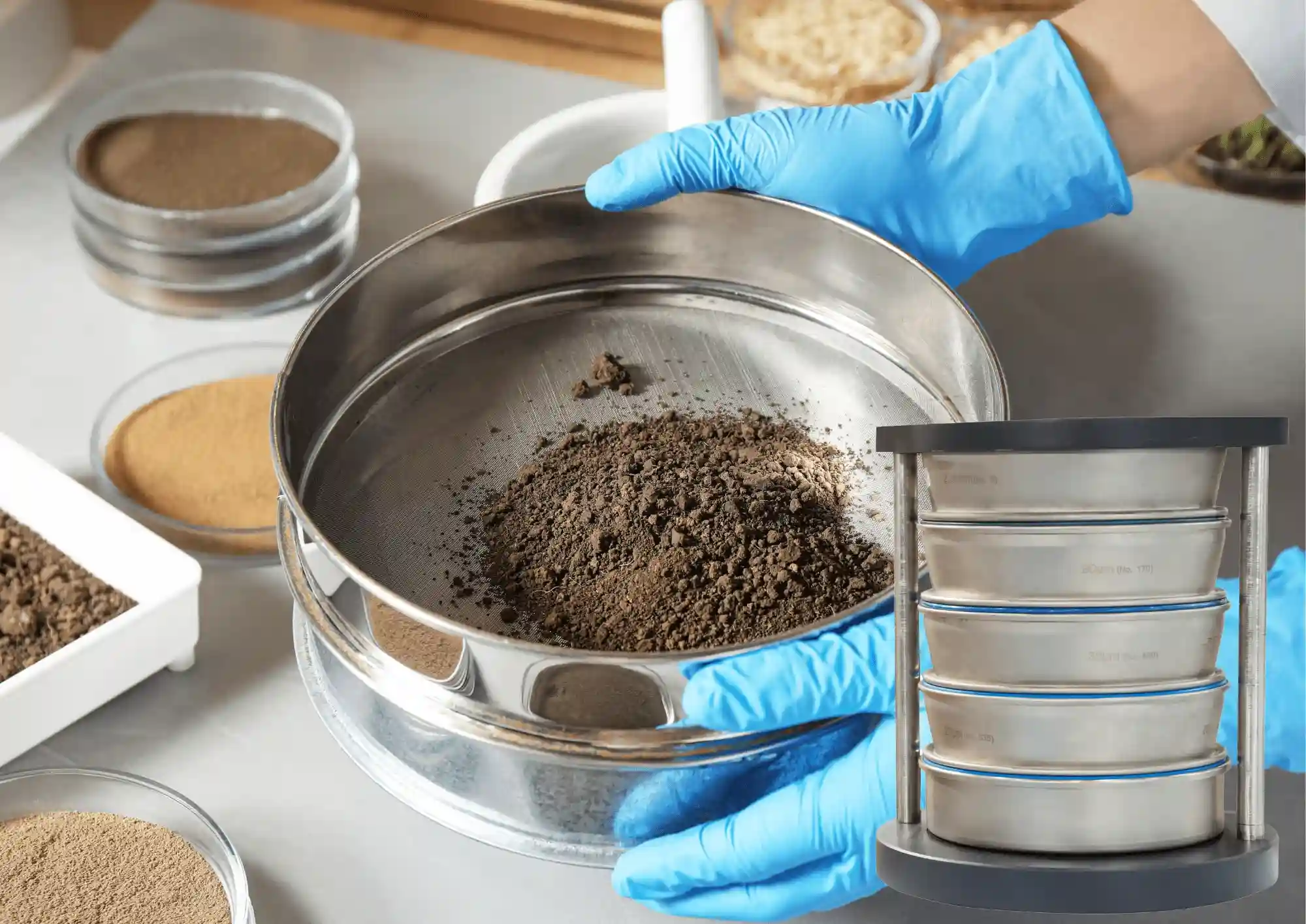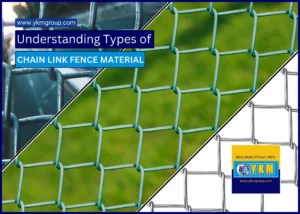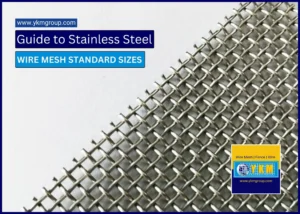Whether you’re a civil engineer designing a road, a geologist studying soil composition, or a quality control expert in a manufacturing plant, understanding what is sieve analysis is crucial. Sieve analysis is a fundamental process used in various industries to determine the particle size distribution of granular materials. In this article, we will delve deep into the world of sieve analysis, exploring its significance, methodology, and applications.
What is Sieve Analysis?

Sieve analysis is a technique that involves separating particles based on their size. It’s a valuable tool for engineers, geologists, chemists, and countless other professionals who deal with particulate matter. This method provides valuable data about the distribution of particle sizes within a sample, enabling precise control and informed decision-making.
The History of Sieve Analysis
Understanding the history of sieve analysis can help better understand what is sieve analysis, it’s importance and evolution. This technique dates back to ancient civilizations, where simple sieves made of woven materials were used to sift grains and separate particles of different sizes. Today, modern sieves with precise mesh sizes and automated equipment have revolutionized the process.
The Significance of Sieve Analysis
Sieve analysis plays a pivotal role in various fields, including construction, agriculture, pharmaceuticals, and mining. Its significance lies in:
- Quality Control: Manufacturers use sieve analysis to ensure product quality by verifying particle size consistency.
- Engineering Design: Civil and mechanical engineers rely on sieve data to design structures that can withstand specific granular materials.
- Soil Classification: Geologists use sieve analysis to classify soils, aiding in geological studies and construction projects.
Conducting Sieve Analysis
Performing sieve analysis requires precision and adherence to standardized procedures. Here’s a step-by-step guide:
1. Sample Preparation
- Gather a representative sample of the material to be analyzed.
- Dry the sample thoroughly to eliminate moisture content, as it can affect the results.
2. Selecting the Appropriate Sieve Screen

- YKM Group manufacture optimal wire mesh for sieves with variable sizes ranging from coarse to fine.
- Stack them in ascending order, with the coarsest sieve at the top and the finest at the bottom.
3. Sieving Process
- Pour the dry sample onto the top sieve.
- Shake or tap the sieves gently to encourage particles to pass through the openings.
- Weigh the material retained on each sieve.
4. Data Analysis
- Calculate the amount of material retained on each sieve.
- Create a particle size distribution curve to visualize the data.
Applications of Sieve Analysis

Sieve analysis finds applications in various industries:
- Construction: Sieve analysis ensures the right mix of aggregates for concrete and asphalt production.
- Agriculture: Farmers use it to assess the suitability of soil for crop cultivation.
- Pharmaceuticals: Particle size analysis is crucial in drug formulation.
- Mining: Sieve analysis aids in mineral processing and resource exploration.
What are the best practices for Sieve Analysis?
Sieve analysis, as we’ve explored, is a crucial process with a wide range of applications. To ensure that you get the most accurate and reliable results, it’s essential to follow some best practices:
1. Proper Sample Collection
The accuracy of your sieve analysis heavily relies on the representativeness of your sample. Make sure to collect samples from multiple locations or batches to obtain a true cross-section of the material you’re analyzing.
2. Thorough Sample Drying
Moisture content can significantly affect the results of sieve analysis. Ensure your sample is adequately dried before analysis, using an oven or other suitable methods. This step prevents clumping and ensures particles flow freely through the sieves.
3. Sieve Maintenance
Regularly inspect and clean your sieves to prevent any clogging or damage. Sieves should be replaced if they show signs of wear and tear, as damaged sieves can lead to inaccurate results.
4. Consistent Sieving Technique
When using a sieve shaker, maintain a consistent shaking technique to ensure uniform results. Irregular shaking can lead to variations in particle distribution.
5. Multiple Runs
For critical applications, consider performing the sieve analysis multiple times to validate the results. This can help identify any anomalies and ensure the data’s reliability.
6. Record Keeping
Maintain detailed records of your sieve analysis, including the date, sample source, sieve sizes used, and results. Proper documentation can prove invaluable for quality control and process improvement.
7. Calibration
Periodically calibrate your sieves and equipment to verify their accuracy. Calibration ensures that the mesh sizes of the sieves are consistent with their specifications.
8. Use of Dispersing Agents
In cases where cohesive materials like clays are being analyzed, the use of dispersing agents can aid in obtaining more accurate results by reducing particle agglomeration.
9. Data Interpretation
Interpret the data from your sieve analysis with care. Pay attention to trends and anomalies in the particle size distribution curve, as these can provide valuable insights into your material.
10. Continuous Learning
Stay updated with the latest developments in sieve analysis techniques and equipment. Continuous learning and improvement will help you master this essential process.
By following these best practices, you’ll not only enhance the accuracy of your sieve analysis but also demonstrate your commitment to delivering reliable results in your field of expertise.
Conclusion
In conclusion, sieve analysis is an indispensable tool for professionals across various industries. By understanding the importance, conducting the analysis accurately, and applying the results wisely, individuals can make informed decisions and contribute to the success of their respective fields. Whether you’re building bridges or formulating pharmaceuticals, sieve analysis is your key to achieving excellence in particle size control.
Frequently Asked Questions (FAQs)
To conduct sieve analysis, you’ll need a set of sieves, a sieve shaker or sieve machine, a balance, and a sample splitter.
The time required for sieve analysis varies depending on the sample size and the number of sieves used. It can take anywhere between a few hours to a full day.
Common errors include inadequate sample preparation, improper sieve stacking, and inconsistent shaking during the analysis.
Sieve analysis is suitable for granular materials, but it may not be appropriate for cohesive materials like clays.
Sieve analysis helps manufacturers maintain consistent product quality by ensuring that the particle size distribution meets specified standards.
Some alternative methods include laser diffraction and sedimentation, but sieve analysis remains a cost-effective and reliable choice for many applications.




